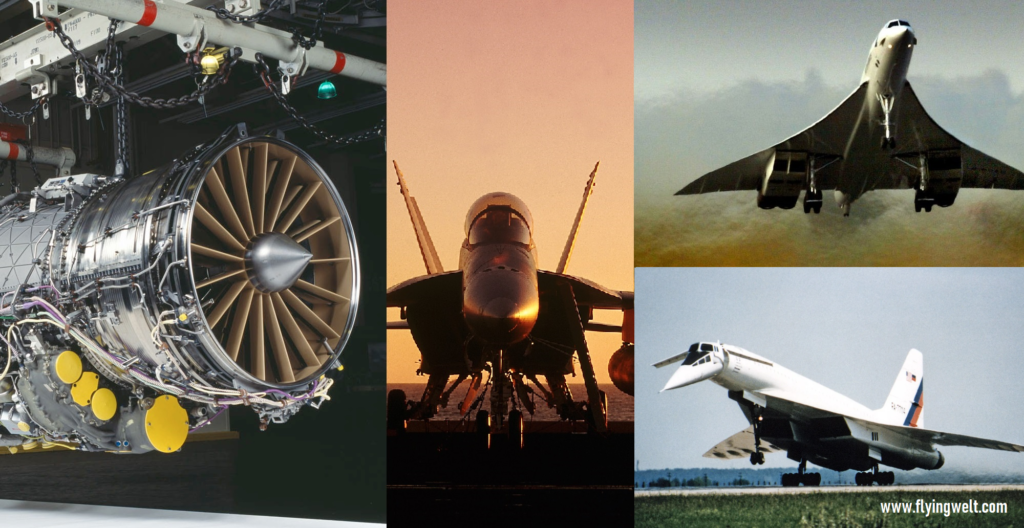In the vast tapestry of technological advancements that have shaped our world, few innovations have been as transformative as the evolution of jet engines. From their nascent stages as experimental prototypes to the sophisticated marvels of today, jet engines have not only revolutionized air travel but have also become synonymous with human progress and ingenuity. In this comprehensive exploration, we embark on a journey through time, tracing the remarkable evolution of jet engines and their profound impact on aviation and beyond.
Sir Frank Whittle’s Vision

The roots of the jet engine can be traced back to the visionary ideas of Sir Frank Whittle, a British engineer whose pioneering work laid the foundation for aeronautical propulsion. In 1930, Whittle patented the concept of a jet engine, a revolutionary departure from traditional propeller-driven aircraft. The premise involved utilizing a gas turbine for propulsion, setting the stage for a new era in aviation.
Despite initial skepticism, Whittle’s ideas gained momentum during World War II. The German Messerschmitt Me 262 became the world’s first operational jet-powered fighter aircraft in 1944, proving the viability of jet propulsion in combat situations.
The Jet Age Takes Flight: Commercial Aviation Soars
Post-World War II, the jet engine underwent a rapid metamorphosis from a wartime novelty to a driving force behind the Jet Age. The de Havilland Comet, the world’s first commercial jet airliner, made its maiden flight in 1949. This marked a paradigm shift in air travel, characterized by unprecedented speed, altitude, and the ability to cover vast distances in significantly less time.
The Boeing 707 and the Douglas DC-8, introduced in the late 1950s, further solidified the dominance of jet-powered commercial aviation. These aircraft not only revolutionized the passenger experience but also connected the world in ways previously unimaginable.
Turbofans and Efficiency Revolution
As aviation entered the latter half of the 20th century, jet engines underwent significant enhancements in efficiency and fuel economy. One pivotal innovation was the introduction of turbofan engines. Unlike their predecessors, turbofans combined traditional jet engine principles with a large fan at the front, increasing fuel efficiency and making air travel more economically viable.
The advent of high-bypass turbofan engines, diverting a significant portion of incoming air around the engine core, further revolutionized the industry. This configuration drastically reduced fuel consumption, making high-efficiency engines the standard for modern commercial aircraft.
Supersonic Dreams: The Concorde Era
In the pursuit of speed, the aviation industry set its sights on breaking the sound barrier. The result was the Concorde, a supersonic jet capable of flying at more than twice the speed of sound. While the Concorde represented a marvel of engineering and a symbol of prestige, its operational life was limited due to economic challenges and environmental concerns.
Though the Concorde era was relatively short-lived, it showcased the possibilities of supersonic travel. Recent years have seen renewed interest in supersonic aviation, with companies exploring the development of a new generation of supersonic passenger jets.
From Oil to the Sky: Alternative Fuels and Environmental Concerns
The environmental impact of aviation, particularly in terms of carbon emissions, has prompted the industry to explore alternative and sustainable fuels. Biofuels, synthetic fuels, and hydrogen are emerging as potential substitutes for traditional jet fuels. These innovations aim to reduce the carbon footprint of aviation and make air travel more sustainable in the long run.
The aviation industry’s commitment to environmental responsibility is shaping a future where technological advancements go hand-in-hand with ecological considerations. This focus on sustainability reflects a collective acknowledgment of the need to balance progress with environmental stewardship.
The Digital Frontier: Jet Engines in the 21st Century
The 21st century has witnessed a convergence of jet propulsion and digital technology. Modern jet engines are equipped with advanced sensors and communication systems that continuously monitor their performance. This data is then leveraged to optimize fuel efficiency, predict maintenance needs, and enhance overall safety.
The concept of the “connected aircraft” is transforming how jet engines are managed. Real-time data analytics enable airlines to make informed decisions, improve operational efficiency, and ensure the safety and reliability of their fleets. The marriage of aviation and digital innovation is not merely about pushing the boundaries of speed but also about creating safer, more efficient, and environmentally conscious air travel.
The Future: Electric Propulsion and Beyond
As we stand at the threshold of a new era in aviation, the industry is exploring electric propulsion as a potential paradigm shift. Electric and hybrid-electric aircraft are in development, promising quieter, more fuel-efficient flights with a reduced environmental impact. While these technologies are still in their infancy, they represent a bold step toward a more sustainable aviation industry.
The concept of vertical takeoff and landing (VTOL) vehicles, often colloquially referred to as “flying cars,” is also gaining traction. Electrically powered VTOL vehicles aim to revolutionize urban mobility, offering a new dimension to personal transportation and potentially transforming the way we navigate our cities.
A Sky Unbounded by Limits
The evolution of jet engines is a testament to human innovation and the ceaseless pursuit of progress. From the visionary ideas of Sir Frank Whittle to the digital frontiers of the 21st century, jet engines have propelled us not only through the skies but into a future where the possibilities are as limitless as the sky itself.
As we gaze forward, the horizon of aviation unfolds with promises of electric propulsion, sustainable fuels, and innovations yet to be imagined. The evolution of jet engines is not just a chapter in the history of aviation; it is an ongoing narrative of human achievement, where the sky is not a limit but a canvas for our collective aspirations.
In a world where the only constant is change, the evolution of jet engines stands as a beacon, reminding us that as long as there are horizons to explore, there will be engines to propel us there. This journey, from propulsion to innovation, is a story still being written, and the skies above remain unbounded by limits.
